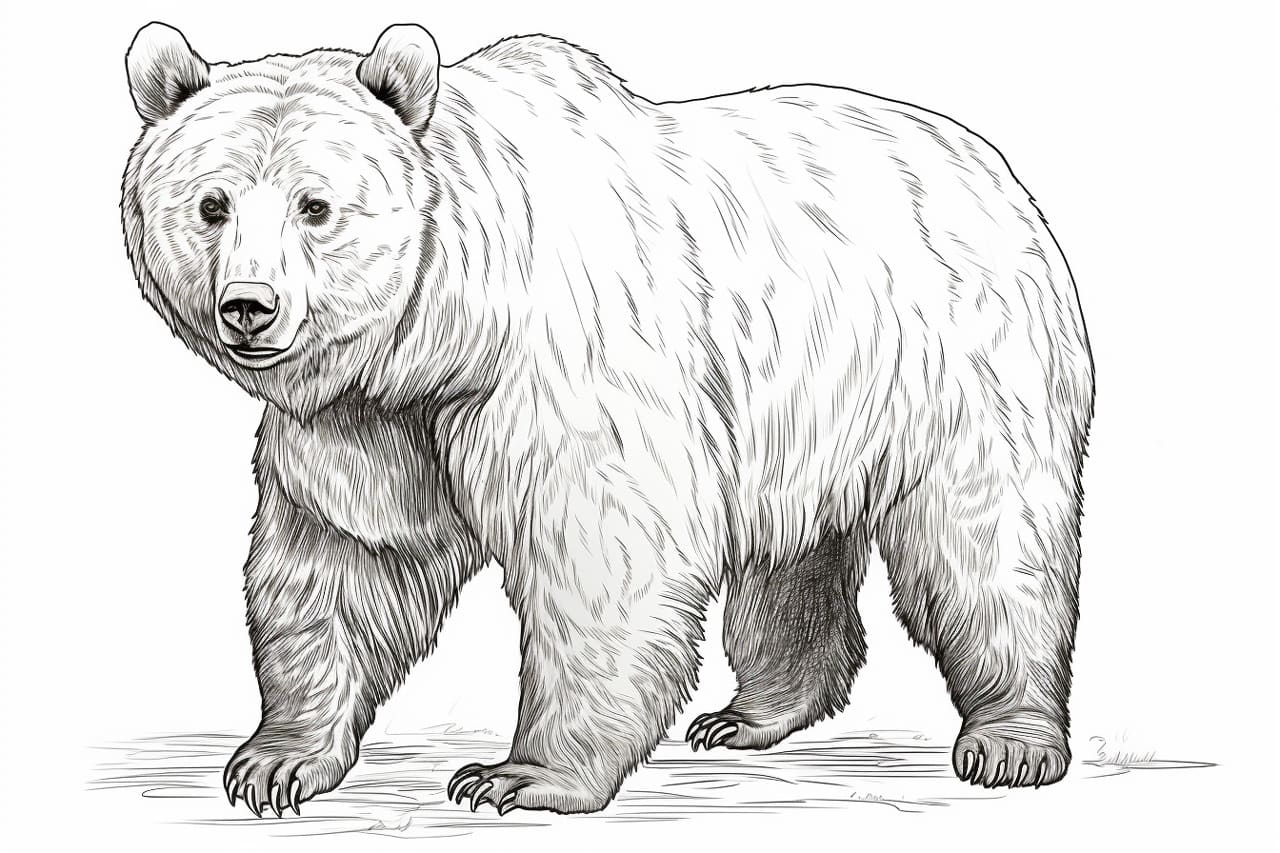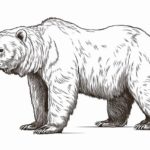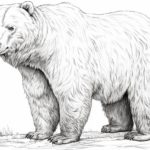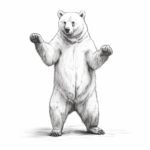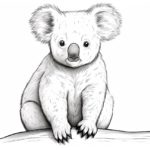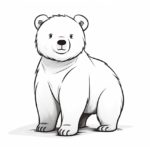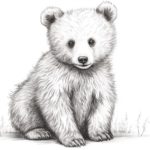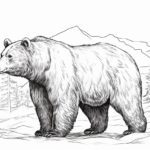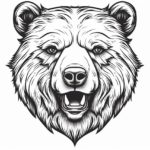Drawing a grizzly bear can be an exciting and rewarding artistic challenge. These majestic creatures, known for their strength and ferocity, also possess a unique beauty that can be captured through careful observation and skilled rendering. In this guide, we will explore the key characteristics of grizzly bears that make them such compelling subjects for artists, as well as provide step-by-step instructions on how to effectively capture their form, texture, and presence on paper. Whether you are a seasoned artist looking to improve your wildlife drawing skills or a beginner eager to take on a new artistic endeavor, drawing a grizzly bear is sure to inspire and push your creative boundaries. So grab your pencils, sharpen your focus, and let’s dive into the captivating world of grizzly bear artistry.
Materials Required
To draw a Grizzly Bear, you will need the following materials:
- Pencil: For sketching the initial outline and details of the bear.
- Paper: A sketch pad or drawing paper to draw the bear on.
- Eraser: For correcting any mistakes or removing unwanted lines.
- Charcoal or graphite pencils: For shading and adding depth to the drawing.
- Blending stump or tortillon: For blending and smoothing out shading.
- Reference image: A picture of a Grizzly Bear to use as a reference for accurate details.
- Optional: Colored pencils or markers for adding color to the drawing, if desired.
These materials will help you create a detailed and realistic drawing of a Grizzly Bear:
How to Draw a Grizzly Bear: a Step-by-step Guide
Step 1: Gather Your Materials
Gather all the necessary materials for drawing a grizzly bear. You will need a pencil, eraser, drawing paper, and reference images of grizzly bears for accuracy.
Step 2: Start with Basic Shapes
Begin by sketching the basic shapes of the grizzly bear. Use circles and ovals to outline the head, body, and limbs of the bear. Pay attention to proportions and placement of each part.
Step 3: Define the Head and Face
Add more detail to the head by sketching the muzzle, eyes, ears, and nose. Grizzly bears have distinctive facial features, so take your time to capture these details accurately.
Step 4: Draw the Body and Limbs
Extend the basic shapes to create the body and limbs of the grizzly bear. Pay attention to the muscle structure and fur texture as you sketch the bear’s powerful body and limbs.
Step 5: Add Fur Texture
Grizzly bears have thick fur, so add texture to your drawing by using short, overlapping lines. Focus on creating depth and volume in the fur to make your bear look realistic.
Step 6: Refine Details
Refine the details of your drawing by adding claws, paws, and any other features that will enhance the realism of your grizzly bear. Take your time to add intricate details that bring your drawing to life.
Step 7: Shade and Add Depth
Use shading techniques such as hatching and cross-hatching to add depth to your drawing. Pay attention to light sources and create shadows to make your grizzly bear look three-dimensional.
Step 8: Final Touches
Add any final touches to your drawing, such as highlights or additional details to make your grizzly bear drawing stand out. Take a step back and assess your drawing to see if any adjustments are needed.
Step 9: Practice and Experiment
Drawing a grizzly bear takes practice, so don’t be discouraged if your first attempt is not perfect. Keep practicing and experimenting with different techniques to improve your drawing skills and create more realistic grizzly bear illustrations.
Conclusion
Great job on drawing the grizzly bear! Your attention to detail and shading really brought out the strength and majesty of this magnificent animal. Keep practicing and exploring different techniques to continue improving your skills. Remember, art is a journey, so embrace the process and enjoy every step along the way. Keep up the fantastic work!
Fun Facts About Grizzly Bears
- Grizzly bears are the most widely distributed bear species in North America, found in the western United States, Canada, and Alaska.
- These bears are known for their distinctive hump on their shoulders, which is a muscle mass used for digging.
- Grizzly bears are excellent swimmers and can swim long distances to cross rivers or lakes in search of food.
- Despite their large size and strength, grizzly bears can run up to 30 miles per hour for short distances.
- Grizzly bears have an incredible sense of smell, which is estimated to be 2,000 times better than a human’s.
- These bears are omnivores, meaning they eat both plant and animal matter. Their diet can include berries, roots, fish, small mammals, and even larger animals like moose or elk.
- Grizzly bears are solitary animals except during mating season or when a mother is caring for her cubs.
- Female grizzly bears give birth to one to three cubs during the winter hibernation period, and the cubs stay with their mother for about two to three years before becoming independent.
- Grizzly bears play a crucial role in their ecosystems by spreading seeds through their scat and helping to control prey populations.
- Despite their intimidating reputation, grizzly bears are generally not aggressive towards humans unless they feel threatened or provoked. It’s important to give them space and respect their habitat when encountering them in the wild.
Suggestions for Scenes and Settings for Grizzly Bear Drawings
- A grizzly bear fishing for salmon in a rushing river, with the water splashing around it.
- A mother grizzly bear and her cubs playing in a field of wildflowers.
- A solitary grizzly bear standing on a rocky cliff, overlooking a vast forest below.
- A grizzly bear roaming through a dense pine forest, with sunlight filtering through the trees.
- A grizzly bear scratching its back against a large tree trunk, with its fur ruffling in the breeze.
- A close-up of a grizzly bear’s face, focusing on its intense gaze and powerful jaw.
- A grizzly bear digging for roots and insects in a meadow, with dirt flying in the air.
- A grizzly bear lounging in a shallow stream, cooling off on a hot day.
- A grizzly bear standing on its hind legs, reaching for berries on a high bush.
- A nighttime scene of a grizzly bear under the glow of the moon, casting a shadow on the forest floor.

